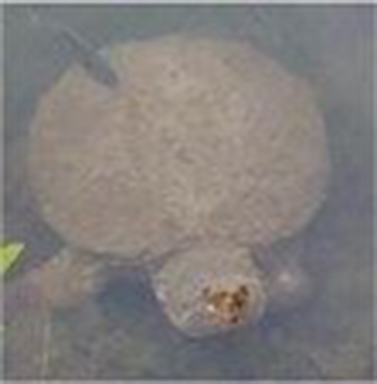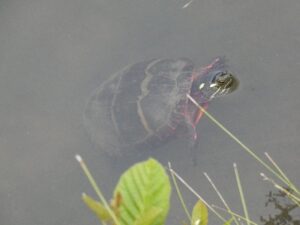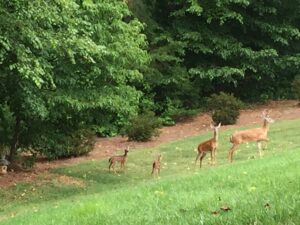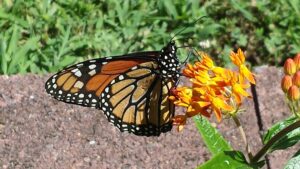
Animals in Winter
Salemtowne’s natural landscape can be enjoyed in all seasons from the fresh blooms of spring and summer to the changing of leaves in the fall and the snow-covered grounds in the winter. Each change of season brings challenges for wildlife. Salemtowne’s wildlife include: white-tail deer, common snapping turtles, grey foxes, hummingbirds, butterflies, eastern gray squirrels, groundhogs, snakes, and Canada geese.
Winter is here. Therefore, food for animals may be scarce. Water sources may be frozen. Temperatures will drop and it will become incredibly cold. So, what can wild animals do? They have three choices: hibernate, adapt, or migrate.
Hibernating is more than just falling into a deep sleep! Hibernation is a way for animals to conserve energy. Some animals store food for later. Most animals like bears eat to obesity in preparation for hibernation. In Katmai National Park in Alaska, they even have a Fat Bear Contest. They take pictures of the bears in June and again in Sept./Oct. Visitors vote on the fattest bear! (https://www.nps.gov/katm/learn/fat-bear-week-2021.htm) Hibernation involves physiological changes, such as a drop in body temperature. The Artic Ground Squirrel’s temperature drops to 27oF. There are also metabolic changes such as the heartbeat slowing to a few beats per minute, and the animal breaths becoming slower as well. The common snapping turtle’s metabolism slows by as much as 99%. This allows the turtle to survive without food or air for up to 100 days!
Adapting to changes in the environment takes many forms. Since the animal cannot hibernate or leave, it must adjust to the conditions. One way an animal adapts is for its coat to become thicker, generating warmth. In some animals the coat changes color so it blends in with the change in the environment. Another means to adapt is to accept changes in diet. Those delicious foods in the summer are no longer available.
Migrating is the third choice. Food and climate are the main causes of animal migration. The food they need no longer exists in the colder weather. They cannot tolerate the cold weather, resulting in migration south to warmer climates. Even after rigorous studies, scientists are not entirely sure how animals know where to go and when to leave, especially when they have never made the journey before.
What do animals at Salemtowne do?
The common snapping turtle, ground hogs, and snakes hibernate.

The eastern gray squirrel, white-tail deer, and gray fox adapt.

The butterfly, hummingbird, and Canadian goose migrate.

Written by Salemtowne resident Kay Snavely. In 2011 Kay completed the course work and passed the exam to become a Virginia Master Naturalist. Virginia Master Naturalists are volunteer educators, citizen scientists and stewards who care about nature and want to help Virginia conserve and manage natural resources and public lands. Kay earned 2,500 hours. The vast majority of those hours were working and teaching classes at Pocahontas State Park in Chesterfield County and The Science Museum of Virginia in Richmond. We appreciate Kay continuing to share her wildlife knowledge in the classroom at Salemtowne.


